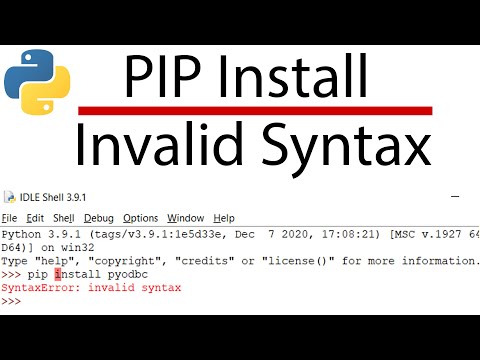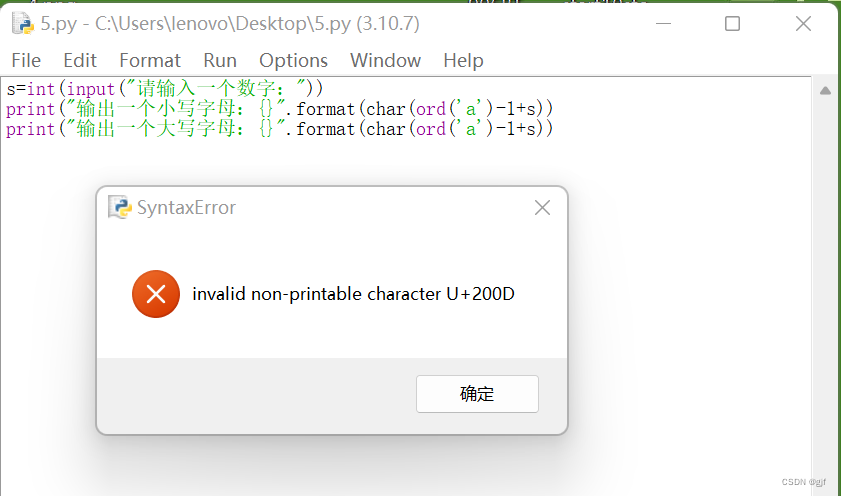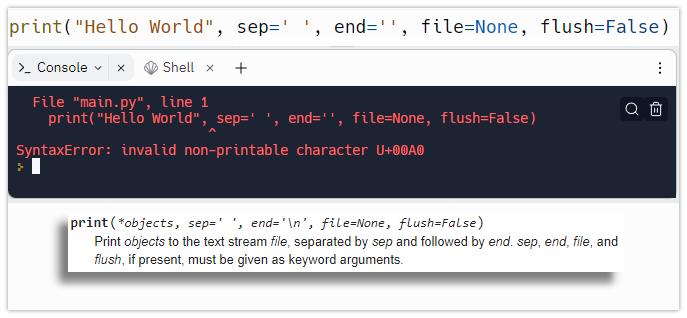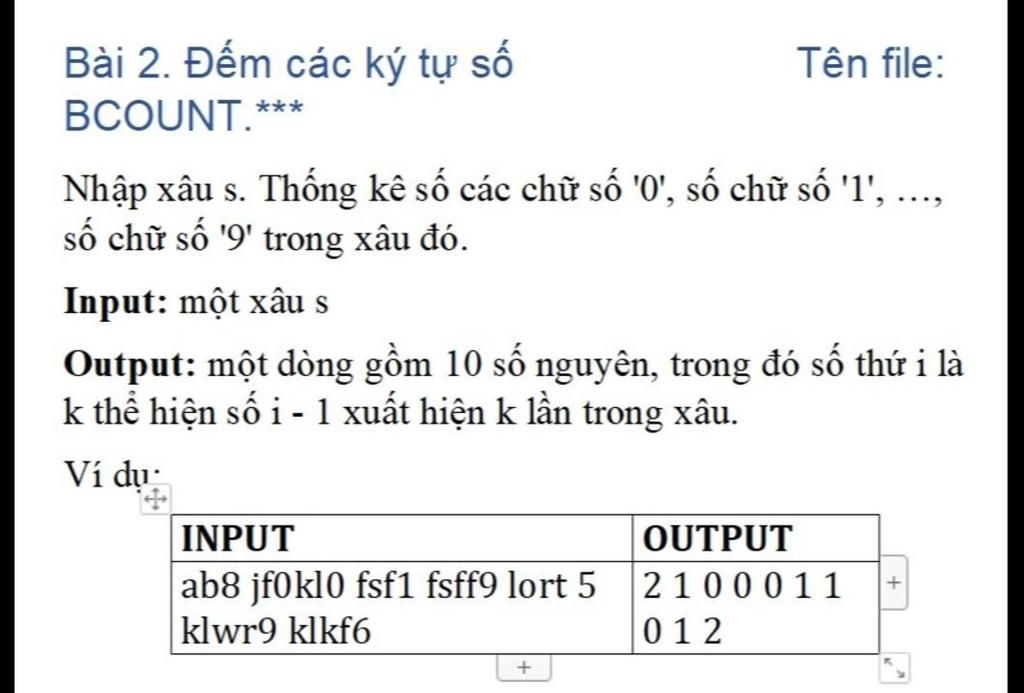Invalid Non-Printable Character U+00A0
Character encoding plays a significant role in ensuring the accurate representation and communication of text. In the world of computing, where digital information is exchanged globally, adhering to standardized character encoding systems becomes crucial. Unicode, a widely accepted character encoding standard, provides a consistent representation across various platforms, languages, and writing systems. However, within Unicode, there are non-printable characters that can introduce complications if not handled correctly.
Character Encoding and Unicode Basics
Character encoding is the process of mapping characters to their binary representations. It enables computers to store, transmit, and display textual data correctly. Unicode, a commonly used character encoding system, assigns unique code points to every character, irrespective of language or script. This ensures the interoperability of text data across different systems and platforms.
Presentation and Representation of Characters
In Unicode, characters can be presented and represented in various ways. The presentation layer determines the visual appearance of a character, such as its font, size, and style, while the representation layer deals with the actual binary representation of the character.
Introduction to Non-Printable Characters
Non-printable characters, as the name suggests, are characters that are not intended to be physically printed or displayed. Instead, they serve specific purposes, such as formatting, control, or signaling. These characters include whitespace characters, control characters, and invisible formatting characters.
Definition and Properties of U+00A0
One such non-printable character is U+00A0, also known as the no-break space. It is a Unicode character that represents a non-breaking space, meaning it prevents line breaks from occurring between adjacent words or elements.
The U+00A0 character, despite being non-printable, is widely used, especially in HTML documents, to maintain proper spacing and alignment. It is equivalent to the HTML entity ” “.
Common Uses and Misuses of U+00A0
U+00A0 finds regular use in cases where the line-breaking behavior must be preserved. For instance, in web pages, it is often employed to prevent text from being split across lines, ensuring tidy formatting. It is also extensively used in table cells or indented text where line breaks could disrupt the desired structure.
However, sometimes U+00A0 is misused or overused. It can be mistakenly or carelessly inserted, leading to unintended display issues and problematic behavior, especially during text processing or parsing.
Issues and Challenges Related to U+00A0
Using U+00A0 without proper understanding or control can introduce various challenges. For instance, if a document contains excessive U+00A0 characters, it can negatively affect readability, searchability, and extraction of text.
Moreover, U+00A0 can cause compatibility issues in certain environments or software applications that do not handle it correctly. For instance, some programming languages or text editors might interpret it as an invalid character, resulting in syntax errors, as indicated by the keywords “SyntaxError invalid non-printable character U 200B, Syntaxerror invalid non-printable character U+FEFF, Syntaxerror invalid non-printable character u 202a, SyntaxError: invalid character in identifier, SyntaxError: invalid syntax Python”.
Handling and Correcting U+00A0 Errors
When encountering U+00A0 errors, it is important to handle them appropriately to ensure the correct rendering and interpretation of the text. There are various methods to handle and correct U+00A0 errors, depending on the context and the software being used.
In Python, for example, the “replace” method can be used to remove U+00A0 characters from a string, as demonstrated in the code snippet:
“`
text = text.replace(‘\u00A0’, ”)
“`
Preventing U+00A0 in Text Processing
To avoid U+00A0 errors in the first place, several preventive measures can be implemented during text processing. These include:
1. Input validation: Implementing proper input validation techniques can help ensure that U+00A0 characters are not inadvertently introduced.
2. Regular expression filtering: Using regular expressions, unwanted U+00A0 characters can be identified and removed during text processing operations.
3. Character replacement: In specific cases where U+00A0 serves no formatting or line-breaking purpose, it can be replaced with alternative whitespace characters or simply removed.
4. Encoding normalization: Applying Unicode normalization algorithms, such as NFKC or NFC, can help identify and standardize representations of characters, including U+00A0.
FAQs:
Q: What is the purpose of U+00A0?
A: U+00A0, also known as the no-break space, is used to prevent line breaks from occurring between adjacent words or elements. It is commonly employed in HTML documents and other contexts where line-breaking behavior needs to be preserved.
Q: What are some common issues related to U+00A0?
A: Some common issues related to U+00A0 include misuse or overuse, leading to readability and searchability problems. Additionally, some programming languages or text editors may interpret U+00A0 as an invalid character, resulting in syntax errors.
Q: How can U+00A0 errors be handled and corrected?
A: U+00A0 errors can be handled and corrected by using appropriate methods based on the programming language or text processing software being used. For example, in Python, the “replace” method can be employed to remove U+00A0 characters from a string.
Q: How can U+00A0 errors be prevented in text processing?
A: U+00A0 errors can be prevented by implementing input validation techniques, using regular expression filtering to remove unwanted U+00A0 characters, replacing U+00A0 with alternative whitespace characters where suitable, and applying encoding normalization algorithms to standardize character representations.
Q: Are there any other non-printable characters that can cause issues in text processing?
A: Yes, there are several non-printable characters that can cause issues, such as the invalid non-printable characters U+200B, U+FEFF, and U+202A, which can result in syntax errors or incorrect interpretation in certain contexts.
In conclusion, while non-printable characters like U+00A0 may serve essential formatting or line-breaking purposes, their misuse or mishandling can lead to various issues in text processing. Understanding their properties, common uses, and potential challenges is crucial in ensuring accurate and error-free representation of textual data. By implementing proper handling techniques and preventive measures, such errors can be effectively addressed and minimized.
Pip Install Invalid Syntax – Pip Syntax Error – Quick Solution – Don’T Miss The Description
Keywords searched by users: invalid non-printable character u+00a0 SyntaxError invalid non printable character U 200B, Invalid non printable character U+FEFF, Syntaxerror invalid non printable character u 202a, SyntaxError: invalid character in identifier, SyntaxError: invalid syntax Python, Remove non breaking space python, u00A0, No-break space
Categories: Top 84 Invalid Non-Printable Character U+00A0
See more here: nhanvietluanvan.com
Syntaxerror Invalid Non Printable Character U 200B
If you’ve ever encountered the error message “SyntaxError: invalid non printable character U+200B” while programming, you may have wondered what it means and how to resolve it. This article aims to provide a comprehensive explanation of this error and offer solutions to help you overcome it. So, let’s delve into the world of non printable characters and understand their role in programming.
Non printable characters are Unicode characters that are invisible or have no visual representation on the screen. These characters include control characters, formatting characters, and other special characters like line separators. The Unicode character U+200B, which triggers the SyntaxError, represents the Zero Width Space (ZWSP).
The Zero Width Space is a Unicode character that, as its name suggests, has no visual width. It is mainly used in typography to control word wrapping and line breaking in languages that don’t use spaces between words, such as Chinese and Japanese. However, in programming languages, the ZWSP can cause issues by breaking the expected syntax.
When programming, syntax rules dictate how code should be written to create valid instructions for the computer to execute. However, if a non printable character like the ZWSP sneaks into your code, it can disrupt the syntax and trigger a SyntaxError.
The “SyntaxError: invalid non printable character U+200B” typically occurs when you copy and paste code from sources like websites, documentation, or chat platforms. These platforms often apply formatting to the text, including invisible characters, that can inadvertently make their way into your code. Even though you may not spot these characters visually, they can still impact the execution of your program.
Resolving this error requires identifying and removing the non printable character causing the issue. Here are a few steps you can follow to address the SyntaxError effectively:
1. Identify the line and location: The error message will usually indicate the line where the invalid character is found. Look for the specific line mentioned in the error message to narrow down your search.
2. Inspect the affected line: Carefully examine the line of code mentioned in the error message. Check for any unexpected or out-of-place characters, especially around areas that could potentially contain non printable characters.
3. Use a text editor with a Unicode viewer: Open the file in a text editor that allows you to view Unicode characters. You can use this feature to detect and identify the particular non printable character causing the issue.
4. Remove or replace the invalid character: Once you have identified the invalid character, remove it or replace it with a valid character. You can either manually delete the character using your text editor or use find-and-replace functionality to substitute it with an appropriate alternative.
Now let’s address some frequently asked questions regarding SyntaxError: invalid non printable character U+200B:
Q1. What should I do if I’m unable to identify the invalid character?
A1. If you are unable to locate the invalid character visually, you can try printing out the Unicode value of each character in the problem line to pinpoint the culprit. Once you have the Unicode values, consult Unicode references to identify the character.
Q2. How can I prevent this error from occurring in the future?
A2. Avoid copying and pasting code directly from sources without proper inspection. Use a reliable text editor that can display and highlight non printable characters to catch them before running your code.
Q3. Can this error occur in any programming language?
A3. Yes, this error can occur in any programming language that supports Unicode. So, it is vital to be aware of non printable characters, like the Zero Width Space (ZWSP), regardless of the programming language you work with.
In conclusion, SyntaxError: invalid non printable character U+200B can be a tricky error to address, but with careful inspection and resolution steps, you can overcome it successfully. Remember to always check your code for unexpected characters when copying and pasting, and make use of appropriate tools to aid in the detection and removal of non printable characters. Happy coding!
Invalid Non Printable Character U+Feff
Introduction:
When working with digital text, you may come across strange and seemingly invisible characters like the invalid non-printable character U+FEFF. This character, though unseen, can cause unexpected issues when manipulating or processing text. In this article, we will delve into the details of U+FEFF and address frequently asked questions about it.
Understanding U+FEFF:
U+FEFF, also known as the Byte Order Mark (BOM), is a Unicode character primarily used to indicate the endianness (the byte order) of a text file or stream. Its hexadecimal representation is FE FF, with FE representing the high-byte and FF representing the low-byte. Initially, it was included to assist in automatic byte-order detection for files, particularly those encoded in UTF-16 or UTF-32.
However, over time, U+FEFF has created confusion, as it has been misused, causing unexpected behaviors in various software applications and programming languages. Due to its shortcomings, its usage is now discouraged across multiple platforms.
Common Issues with U+FEFF:
1. Invisible Characters: One of the significant concerns with U+FEFF is that it appears invisible to users, making it difficult to identify or remove. This can become problematic, especially in scenarios where text processing or manipulation is involved.
2. Unexpected Behavior: U+FEFF can lead to unforeseen issues depending on the software or context in which it is used. Some systems may interpret U+FEFF as an actual character, resulting in unwanted whitespace, rendering errors, or even breaking the functionality of certain applications.
3. Compatibility Issues: As mentioned earlier, U+FEFF was primarily intended for UTF-16 and UTF-32 encoding. However, its usage has extended to other encodings, such as UTF-8. This has led to compatibility issues between software systems that handle different Unicode encodings, further exacerbating the confusion.
4. Language Specific Challenges: Certain programming languages, text editors, or operating systems treat U+FEFF differently. For instance, while some text editors display it as a character, others may remove it silently or display it as a whitespace. Such discrepancies can lead to inconsistent behavior across different environments.
FAQs:
Q: How can I detect the presence of U+FEFF in a text?
A: You can search for the hexadecimal representation FE FF or use text editors or programming languages that provide tools specifically designed to identify and manipulate invisible characters.
Q: How can I remove U+FEFF from my text?
A: Many reliable text editors and programming languages allow you to trim or replace U+FEFF. Alternatively, you can convert the encoding of the text to a format that doesn’t include the BOM.
Q: Can U+FEFF be useful in any context?
A: U+FEFF does have legitimate uses in specific cases, such as assisting older software that requires its presence to detect the byte order of a file. However, in most modern scenarios, it is recommended to avoid its usage entirely.
Q: Why does U+FEFF cause issues with certain applications or programming languages?
A: The behavior of U+FEFF varies across different software systems depending on how they interpret the character. Some systems may interpret it as the first character in a file, while others may consider it as whitespace. This inconsistency leads to unexpected results.
Q: Are there any industry standards or best practices regarding U+FEFF?
A: The Unicode Standard strongly advises against the use of U+FEFF unless it serves a specific purpose, such as encoding detection in older systems. For general usage, it is recommended to omit the BOM, especially when working with UTF-8 encoded files.
Conclusion:
While the invalid non-printable character U+FEFF (Byte Order Mark) was initially introduced to solve byte-order detection issues, it has become a source of confusion and compatibility problems in modern computing environments. Its invisible nature and diverse interpretations across various software systems have led to unexpected behavior. Therefore, it is generally advised to remove U+FEFF from text files or streams, ensuring smoother processing and compatibility across different platforms.
Images related to the topic invalid non-printable character u+00a0

Found 29 images related to invalid non-printable character u+00a0 theme


![Syntaxerror: invalid non-printable character u+00a0 [SOLVED] Syntaxerror: Invalid Non-Printable Character U+00A0 [Solved]](https://itsourcecode.com/wp-content/uploads/2023/05/Syntaxerror-invalid-non-printable-character-u00a0.png)

















Article link: invalid non-printable character u+00a0.
Learn more about the topic invalid non-printable character u+00a0.
- SyntaxError: invalid non-printable character U+00A0 in python
- [Solved] SyntaxError: invalid non-printable character in Python
- Syntaxerror: invalid non-printable character u+00a0 [SOLVED]
- SyntaxError: invalid character in Python [Solved] – bobbyhadz
- SyntaxError: Invalid Character in Identifier: How to Solve …
- SyntaxError: invalid character in Python – Its Linux FOSS
- Python invalid non-printable character U+00A0_牛八少爷的博客
- invalid non-printable character u+00a0 python – 稀土掘金